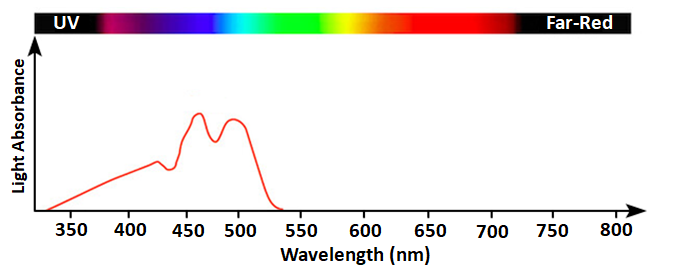Study the given diagram where ‘X’ represents the absorption spectrum of chlorophyll a and ‘Y’ represents the action spectrum of photosynthesis. The conclusions that can be drawn include:

I:
Chlorophyll a is the main pigment in photosynthesis.
II:
Violet-Blue and Red wavelengths are very effective for photosynthesis.
III:
Chlorophyll a is the only pigment capable of absorbing light.
1.
I and II only
2.
I and III only
3.
II and III only
4.
I, II and III


To unlock all the explanations of 38 chapters you need to be enrolled in MasterClass Course.

To unlock all the explanations of 38 chapters you need to be enrolled in MasterClass Course.
Identify the correct relationship between photosynthesis and cellular respiration:
| 1. | while only autotrophs photosynthesize, only heterotrophs respire |
| 2. | while photosynthesis uses solar energy to convert inorganics to energy-rich organics, respiration breaks down energy-rich organics to synthesize ATP |
| 3. | photosynthesis occurs in day time and respiration at night |
| 4. | ATP cannot be formed during photosynthesis, it can only be formed in cellular respiration. |

To unlock all the explanations of 38 chapters you need to be enrolled in MasterClass Course.

To unlock all the explanations of 38 chapters you need to be enrolled in MasterClass Course.
The absorption spectrum shown in the given figure can be of:
1. Chlorophyll a
2. Chlorophyll b
3. Carotenoids
4. Either 1 or 2
Identify the incorrect statement regarding non-cyclic photophosphorylation:
| 1. | Being a light reaction, non-cyclic photophosphorylation occurs in the thylakoid membrane. |
| 2. | The photosystem II complex replaces its lost electrons from an external source. |
| 3. | It generates both ATP and NADPH |
| 4. | When the chloroplast runs low on ATP for the Calvin cycle, the plant may shift from cyclic to non-cyclic electron flow. |
Identify the incorrect statement regarding the light independent reactions in photosynthesis:
| 1. | These reactions occur in the stroma. |
| 2. | They use the products (ATP and NADPH) of light-dependent reactions. |
| 3. | They occur in the absence of light and hence are called the dark reactions. |
| 4. | The three phases are carbon fixation, reduction reactions, and ribulose 1,5-bisphosphate (RuBP) regeneration. |
The number of electrons that need to be transported during cyclic photophosphorylation in sulphur bacteria, to produce one molecule of ATP is:
1. one
2. two
3. three
4. four
The antenna pigment molecules:
| 1. | are responsible for photolysis of water to release oxygen |
| 2. | harvest photons and transfer light energy to the reaction-center chlorophyll |
| 3. | transfer electrons to chlorophyll a |
| 4. | transfer electrons to ferredoxin and then NADPH |

To unlock all the explanations of 38 chapters you need to be enrolled in MasterClass Course.

To unlock all the explanations of 38 chapters you need to be enrolled in MasterClass Course.
The number of turns of Calvin cycle required to produce one molecule of Glyceraldehyde 3 Phosphate is:
| 1. | 1 | 2. | 2 |
| 3. | 3 | 4. | 6 |
The light independent reactions are seen in:
| I. | C3 carbon fixation |
| II. | C4 carbon fixation |
| III. | Crassulacean acid metabolism |
| 1. I and II only | 2. I and III only |
| 3. II and III only | 4. I, II and III |
In the light dependent reactions of photosynthesis:
| 1. | NADPH is reduced to NADP+ by the enzyme NADP reductase |
| 2. | initial carbon fixation takes place forming a 3 carbon compound. |
| 3. | ATP is not produced. |
| 4. | light is absorbed and energy is transported to reaction-center chlorophyll a |







